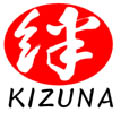It has been almost two years since the Great East Japan Earthquake took place. Thousands of lives have been lost, and just as many homes were damaged. Japan has quickly made its way to recovery, but some memories are there to stay.
14 Japanese students from Miyagi Shiroishi Technical High School, accompanied by 1 supervisor, will be visiting the Philippines from January 24 to February 1, 2013. They are all survivors of the Great East Japan Earthquake last March 11, 2011. Through the “KIZUNA Dispatching Program to the Philippines” they wish to share to the Filipino community their own experiences and lessons learned from the disaster.
The Japanese delegation will be visiting various sites in the country. They will pay a courtesy call to the Embassy of Japan to learn the outline of the bilateral relation between the Philippines and Japan, and to understand the assistance extended by Filipino people upon the Great East Japan Earthquake. Among the other sites included in their program are the Ayala Museum, Rizal Park and Intramuros, to learn the history of the Philippines and the life and great work of Jose Rizal, the Philippine national hero. They will also visit the Philippine Red Cross to learn its efforts for disaster management and social activities. A social call to the Toshiba Information Equipment (Phils.) and Inc. Intercommunication Center for Asia and Nippon (I-CAN) are also part of their itinerary.
Promotion of mutual understanding is also a significant aspect of the “KIZUNA Dispatching Program to the Philippines”. The Japanese students will visit Santo Tomas High School and Maria Clara High School to give presentations on their own experiences during the disaster and the lesson learned from it. They will also participate in home stays with local Filipino families to learn more about the daily life in the Philippines.
The Kizuna Program aims to encourage participants to communicate to other countries that Japan is on its way to recovery. Through their experiences, the participants will be able to provide accurate and first-hand information to the global community not only about the recovery of Japan, but also of the many attractions in various parts of Japan.
The Kizuna Project, the word kizuna meaning “bonds”, will invite more than 10,000 youths from the Asian/Oceanian regions, including 285 Filipinos, to have an opportunity to participate in specially designed programs.

|
Kizuna Dispatching Program to the Philippines
Shiroishi Technical High School / Santo Tomas High School
Schedule |
| Date |
Program |
Purpose |
Accommodation |
| Jan. 23
Wed. |
15:45 |
Assembly at Narita Airport Rest House |
Narita (Airport Rest House) |
| Jan. 24
Thurs. |
AM |
Narita 9:30 → Manila 13:35 (JL741) |
Manila
( CSB Hotel ) |
PM |
Inspection Tour in Manila
Ayala museum |
To learn the history of the Philippines. |
| Jan. 25
Fri. |
9:00-10:00 |
Embassy of Japan |
To learn the outline of the bilateral relation between the Philippines and Japan, and to understand the assistance extended by Filipino people upon the Great East Japan Earthquake. |
Home
Stay |
| 10:00-11:45 |
Intramuros (Fort Santiago, San Augustin Church) |
To learn the life and great work of Jose Rizal, the Philippine national hero. |
| 13:00-17:00 |
Visit SantoTomas High School
Campus Tour
Presentation on the experience and lessons of the Great East Japan Earthquake by the Japanese students
Presentation on Japan / Philippines
Collaborative activity
Meeting with Host Family |
To promote mutual understanding and strengthen Kizuna with Filipino host students and family.
At school, Japanese students will give presentations on their experience during the disaster and the lesson learned.
Both students will work together to create "a collaborative work" that will be given to Santo Tomas High School as memory.
|
| Jan. 26
Sat. |
All day |
Home stay |
Home stay |
| Jan. 27
Sun. |
AM |
Home stay |
Manila
( CSB Hotel ) |
|
|
| 14:00-16:00 |
Collaborative Activity |
| 16:00-17:00 |
Farewell Merienda Party |
| Jan. 28
Mon. |
8:30-15:00 |
Philippine Red Cross |
To visit Philippine Red Cross and learn the efforts for disaster management and social activities. |
| Jan. 29
Tues. |
10:00-11:30 |
Japanese ODA site
"The project for construction of two school buildings for Maria Clara High School" |
To learn the Japanese aid by visiting Maria Clara High School constructed by the Japanese assistance.
To have an exchange program with Filipino students and give presentation on the disaster. |
| 15:00-17:00 |
Toshiba Information Equipment (Phils.), Inc. |
To learn the relationship between the Philippines and Japan in industrial sector by visiting a Japanese-affiliated company. |
| Jan. 30
Wed. |
9:30-16:00 |
Intercommunication Center for Asia and Nippon (I-CAN) |
To learn the social activities for children living on the streets conducted by I-CAN that work with local people. |
| Jan. 31
Thurs. |
9:00-15:00 |
Workshop at CSB Hotel |
To wrap up the learning gained through the program and to discuss how to utilize them. |
| 15 :00-16 :30 |
Reporting Session at CSB Hotel |
To report the fruits of the program to the concerned people who support the program. |
| Feb. 1
Fri. |
|
Manila 9:20 → Narita 14:30 ( JL746 ) |
|


